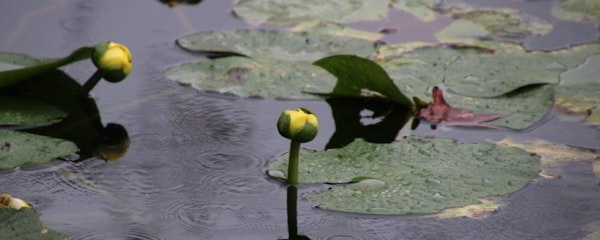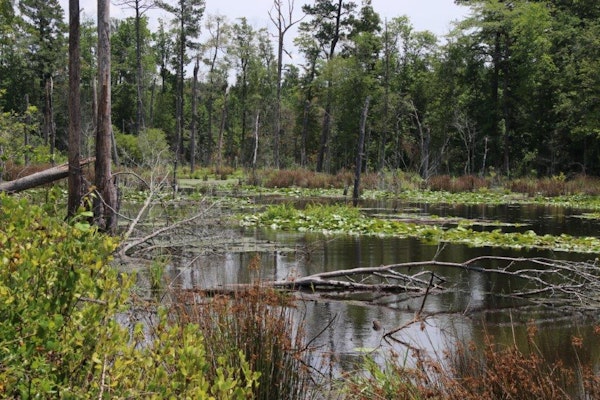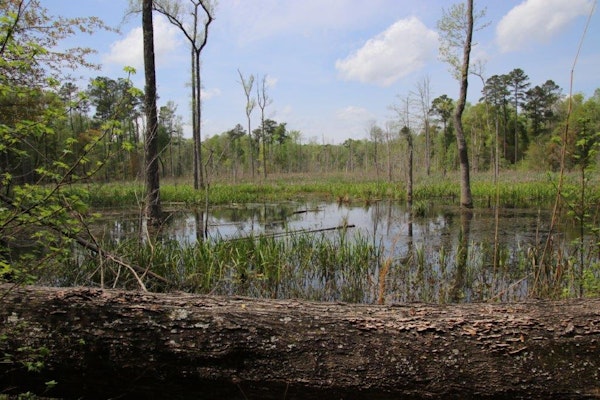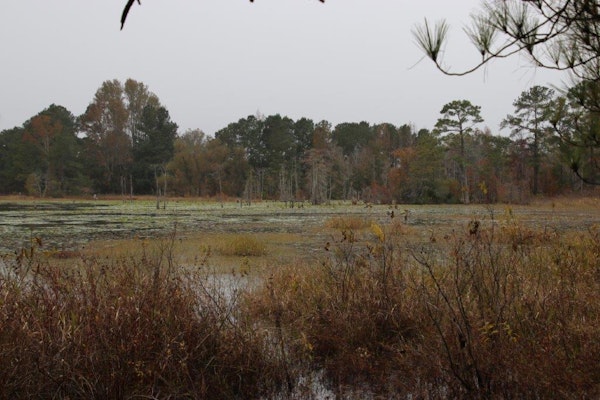Celebrating American Wetlands Month

May marks the annual observance of American Wetlands Month, a time to celebrate one of nature's most productive ecosystems. Learn more about the incredible diversity of wetlands in our state and how it enriches our lives in central SC, as well as CLT's efforts to protect this precious ecosystem.
Why Celebrate Wetlands?
Wetlands are some of the most productive and dynamic habitats in the world, renowned for their ability to remove excess nutrients, toxic substances, and sediment from water that flows through them. This not only helps to improve downstream water quality, but the overall health of waters in our communities. Wetlands are so effective at improving water quality they have been referred to as the “kidneys” of a watershed.
South Carolina is home to an impressive number of natural wetlands, comprising 3.8 million acres and accounting for nearly 20% of the surface area of the state! There are only 2 states with a higher percentage of land areas as wetlands—Florida and Louisiana. Congaree Land Trust works with private landowners to permanently protect this precious resource for our communities. Since 1992, CLT has protected a total of 29,088 acres of wetlands on conserved properties throughout central SC.

Wetlands in central SC
The benefits of South Carolina's wetlands include enhanced water quality, fish and wildlife productivity, and overall quality of life. South Carolina wetlands serve as wintering areas for migrating waterfowl, supporting greater than 30 percent each of American green-winged teal, northern shovelers, mallards, northern pintails, American wigeon, and gadwall that traverse the Atlantic Flyway. Local wetlands also provide flood protection, erosion control, and ground-water recharge as well as recreational opportunities, like hunting, paddling, hiking, and fishing, which drive tourism for the state.
Palustrine forested wetlands constitute about 80 percent of the wetlands in the state. Palustrine wetlands include areas commonly referred to as wet pine flatwoods, pocosins, Carolina bays, beaver ponds, bottomland hardwood forests, swamps, and tidal-freshwater marshes. (source: South Carolina Wetland Resources)

Explore Wetlands in SC
There are several public lands to explore and celebrate wetlands—check out some of these places below! And don't forget to tag your social media pictures with #MoreThanAcres to show us what you find!
CENTRAL SC
To explore coastal marshes, maritime forests, swamp forests, hardwood forests, and longleaf pine flat-woods and savannas, visit Francis Marion National Forest.
To explore lacustrine (freshwater lake) wetlands, visit the Santee National Wildlife Refuge. With 39 miles of shoreline along Lake Marion, the largest lake in the State, it is brimming with wetland wildlife.
To explore the largest intact expanse of old growth bottomland hardwood forest remaining in the southeastern United States, visit the Congaree National Park. (Note: at the time of writing this article the park is closed; check the website www.nps.gov/cong for updates.)
To explore pocosins and other wetland bog habitats, visit Carolina Sandhills National Wildlife Refuge. These nutrient-poor, moist sites are ideal for the carnivorous pitcher plants which bloom this time of year!
To take a close-up look at one of the last remaining large Carolina Bays on the Mid-Atlantic Coastal Plain, visit Woods Bay State Park. The 1,590-acre park, located in the coastal plains region, features a wide range of habitats including marsh, sandhills, oak-hickory forest and shrub bog.
To explore an otherworldly 2,965 acres of the most diverse protected area in the Piedmont region, including granitic flatrocks, waterslides, waterfalls, beaver pond, and a variety of wildflowers and wildlife, visit Forty Acre Rock Heritage Preserve.
LOWCOUNTRY
The Cape Romain National Wildlife Refuge, a 64,000-acre salt-marsh wetland, is located near the mouth of the Santee River.
At the mouth of the Coosawhatchie River is Pickney Island National Wildlife Refuge, a 4,053-acre expanse of salt-marsh wetlands.
Nearby are the Ashepoo-Combahee-Edisto Basin National Wildlife Refuge (18,000 acres of salt marsh), and the 144,000- acre Ashepoo-Combahee-Edisto National Estuarine Research Reserve.

Preserving Wetlands and Protecting Water Quality through Voluntary Land Conservation
Studies conducted by the South Carolina Heritage Trust Program indicated that Carolina bay wetlands have been extensively disturbed and altered. Of the 2,651 Carolina bays that are 2 acres or larger identified by the State Heritage Trust Program in 1983 (Bennett and Nelson, 1991), more than 80 percent have been significantly altered and degraded. Many of South Carolina's tidal-freshwater marshes were diked, impounded, and converted to rice fields during the 18th and 19th centuries. Estimates of changes in wetland areas as a result of Hurricane Hugo are difficult to determine, but as much as 90 percent of the wet pine flatwoods of the Francis Marion National Forest may have been damaged by the wind. A conservation easement is a tool landowners can use to voluntarily protect their land, including the wetlands that provide our communities with healthy ecosystems, improved health of water, and overall quality of life.

America first celebrated “Wetlands Month” in May 1991. American Wetlands Month was created by the U. S. Environmental Protection Agency (EPA) and its federal, state, tribal, local, non-profit, and private sector partners to celebrate the vital importance of wetlands to the Nation's ecological, economic, and social health and to educate Americans about the value of wetlands as a natural resource.

